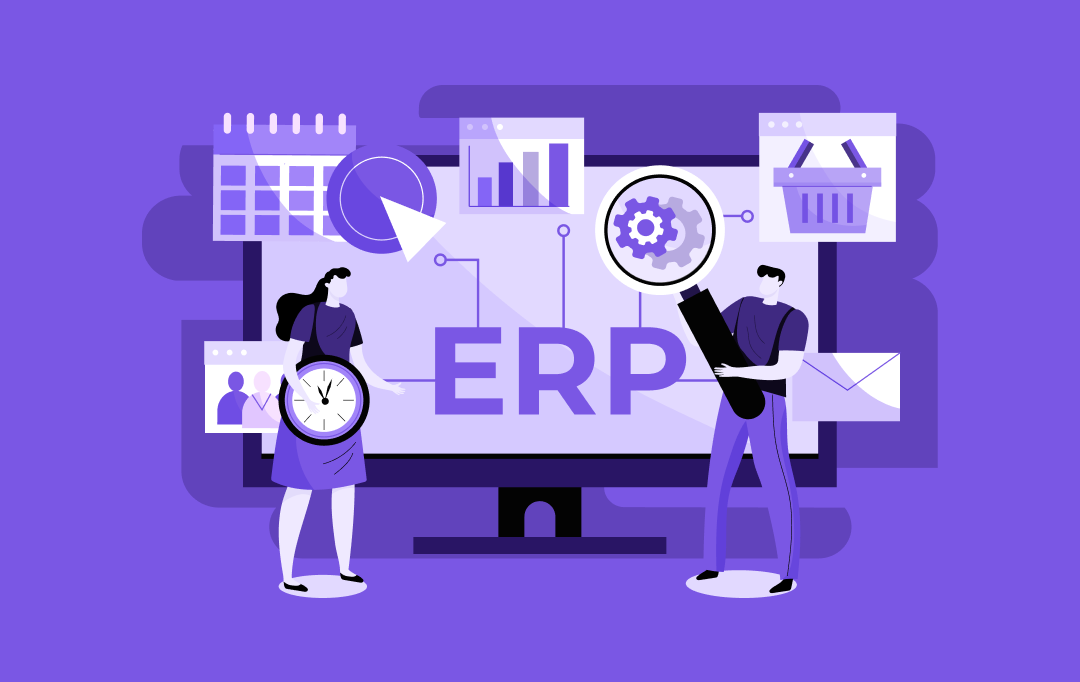- How Much Does It Cost to Build an Oil and Gas Data Management Software?
- Factors Influencing the Cost to Build an Oil and Gas Data Management Software
- App Type
- UIUX Strategy
- Development Team Expertise
- Development Team Location
- GDPR Impact
- Testing and Quality Assurance
- Technological Innovation
- Complexity of the Features
- Real-time Data Processing Capabilities
- Cloud vs On-Premise Deployment
- Oil and Gas Data Management Software Features
- Geological Surveys
- Seismic Data
- Well logs
- Production Volumes
- Equipment Status
- Sensor Data
- Financial Records
- Predictive Analytics
- Compliance Management
- Data Integration
- Real-Time Monitoring
- Oil and Gas Data Management Software Development Process
- Requirements Gathering and Analysis
- System Design and Architecture
- Development and Testing
- Deployment and Implementation
- Ongoing Maintenance
- Appinventiv’s Expertise in Oil and Gas Data Management Software Development
- FAQs
Oil and gas data management software development has emerged as a critical necessity, offering a plethora of benefits to businesses in the industry. The software enables improved operational efficiency, enhanced decision-making capabilities, and increased productivity by centralizing and organizing diverse data such as geological surveys, sensor readings, and financial records.
It facilitates the uncovering of valuable insights crucial for predicting equipment failures, identifying optimal drilling locations, and enhancing production efficiency through real-time reservoir analysis. More than just data storage, the software unlocks the full potential of oil and gas operations, fostering productivity and cost optimization while offering competitive edge in the demanding industry landscape.
As per a Statista report, by 2030, the oil industry is expected to spend over $12 billion on IT services, which is four times more than what is projected for advanced analytics.

However, building an oil and gas data management software requires a strategic approach as well as a significant amount of effort. It includes planning, research, analysis, cost enhancement factors, etc. Typically, the cost to build an oil and gas data management software differs from $30,000 to $250,000 or more.
Let’s dive deep into the significant aspects of oil and gas data management software development costs in the detailed blog below.
How Much Does It Cost to Build an Oil and Gas Data Management Software?
The cost to build an oil and gas data management software varies depending on several factors. Primarily, the complexity of the features required plays a significant role. Software with advanced functionalities such as geological modeling, real-time sensor data analysis, and integration with financial systems will incur higher development costs compared to simpler solutions.
Additionally, incorporating innovative technologies like artificial intelligence (AI) and machine learning (ML) can impact oil and gas data management software development cost. Moreover, the intricacy of UI/UX design tailored to the needs of oil and gas professionals also influences costs. Here is a breakdown based on the complexity levels of the application.
| Application Type | Cost Assessment | Time Duration |
| Basic (Data visualization, simple reporting) | $30,000 to $60,000 | 2-3 months |
| Intermediate (Advanced reporting, basic analytics, mobile access) | $60,000 to $90,000 | 3-6 months |
| Advanced (Real-time data integration, predictive analytics, complex workflows) | $90,000 to $250,000 | 9-12 months |
| Enterprise (Large-scale deployments, multi-tenant capabilities, industry-specific customizations) | $250,000+ | 12+months |
Let’s delve into the factors influencing the cost of building oil and gas data management software.
Factors Influencing the Cost to Build an Oil and Gas Data Management Software
The cost of developing an oil and gas data management software is impacted by several crucial factors. These include security measures, scalability, UI/UX design, integration complexities, compliance with regulations like GDPR, customization options, etc. Each factor requires additional resources and expertise, adding to overall development expenses.

App Type
Oil and gas data management software plays a valuable role in enhancing operational efficiency and decision-making within the industry. Leveraging various software solutions such as enterprise resource planning (ERP) systems, geographical information systems (GIS) for spatial analysis, and production monitoring software for real-time optimization, businesses can streamline operations and improve performance. Additionally, reservoir simulation and data analytics tools provide valuable insights, enabling informed decision-making. Deciding on the specific type of oil and gas data management software is crucial, as it significantly impacts the overall development costs while optimizing efficiency.
Also read: How AI Is Revolutionizing the Oil and Gas Industry – Top 10 Use Cases and Benefits
UIUX Strategy
Businesses understand that a well-designed and intuitive user interface (UI) and user experience (UX) strategy are crucial for customer satisfaction and adoption. However, investing in meticulous UI/UX planning, research, and design iterations can lead to higher oil and data management software development costs.
Development Team Expertise
The size of the development team plays a crucial role in determining the overall development costs, as it directly impacts the resources allocated and the timeline for completion. Additionally, the expertise of the team members is equally significant, as a highly skilled and experienced team can navigate complexities more efficiently. When budgeting for oil and gas data management software, businesses should weigh the development team’s size and expertise to make a balanced decision.
| Software Development Team | Hourly Rates (Approx) |
| Project Manager | $25 to $30 |
| Tech Lead (Backend / Frontend) | $28 to $30 |
| Sr. Software Developer | $25 to $30 |
| Sr. Web & Backend Developer | $24 to $30 |
| DevOps | $25 to $30 |
| Business Analyst | $20 to $25 |
| UX/UI | $20 to $25 |
| QA | $20 to $25 |
Development Team Location
The choice of region and location for hiring developers significantly influences the cost to build an oil and gas data management software. Regions with higher labor costs, such as tech hubs like Silicon Valley or major metropolitan areas, may increase expenses due to higher salaries and operating costs.
Conversely, selecting regions with lower labor costs, such as emerging tech centers in Eastern Europe or Southeast Asia, can result in more affordable development options without compromising quality.
| Region | Hourly Rates of Development |
| UAE | $60-$65 |
| US | $95-$100 |
| Western Europe | $80-$90 |
| Australia | $70-$90 |
| Eastern Europe | $50-$55 |
| Asia | $25-$40 |
GDPR Impact
Compliance with regulations like the General Data Protection Regulation (GDPR) is a priority for businesses developing oil and data management software. However, implementing data privacy and security measures to meet GDPR requirements can add to development costs, requiring additional resources and expertise.
Testing and Quality Assurance
Businesses recognize the importance of thorough testing and quality assurance processes in delivering reliable, high-performance oil and data management software. Investing in comprehensive testing protocols and QA resources is essential for ensuring customer satisfaction but may lead to higher development costs.
Technological Innovation
Data management in the oil and gas industry is crucial, especially with the rapid technological advancements driving the need for efficient collection, analysis, and utilization of vast amounts of data generated throughout the value chain.
Businesses understand the value of incorporating advanced technologies like AI, machine learning, or blockchain into oil and data management software. However, integrating these innovative features requires specialized expertise and additional development effort, potentially increasing project expenses.
(Also read: How AI Is Revolutionizing the Oil and Gas Industry – Nine Use Cases and Benefits)
Complexity of the Features
The complexity of features and functionalities required in oil and data management software directly impacts businesses’ development costs. More complex features like real-time data analytics or predictive maintenance algorithms require additional resources and development time, leading to higher project expenses.
Real-time Data Processing Capabilities
Integrating real-time data processing functionalities into oil and gas data management software has a substantial impact on development expenditures. These capabilities facilitate immediate analysis and visualization of incoming data streams, empowering companies to make prompt decisions and adapt swiftly to operational fluctuations. This integration necessitates the utilization of sophisticated technologies and infrastructure, such as high-speed data ingestion systems, real-time analytics engines, and scalable processing frameworks. Furthermore, ensuring the precision, dependability, and security of data within real-time processing environments introduces complexity to the development endeavor, and enhances costs.
Cloud vs On-Premise Deployment
The choice between cloud-based and on-premise deployment models significantly impacts the financial aspect of oil and gas data management software. While cloud deployment offers scalability and accessibility with reduced hardware costs and maintenance overheads, it often entails subscription-based pricing tied to resource usage. Conversely, on-premise deployment provides greater control and customization but requires upfront investments in infrastructure and maintenance. Factors like data security, regulatory compliance, scalability needs, and budget constraints influence the decision-making process, ultimately affecting the overall expenditure on software development and implementation.
Oil and Gas Data Management Software Features
Prominent features are essential in the development of oil and gas data management software, as they enable businesses to achieve their objectives and enhance user experience. Let’s delve into these features.

Geological Surveys
This feature helps manage data related to the Earth’s structure and composition in areas where oil and gas exploration occurs. It includes information about the types of rocks, formations, and other geological features that may impact drilling and extraction processes.
Seismic Data
Seismic data management involves organizing information gathered from seismic surveys, which are used to map subsurface structures and identify potential oil and gas reservoirs. This data helps in understanding the geological characteristics of the area being explored.
Well logs
Well logs are detailed records of activities and observations made during the drilling and operation of oil and gas wells. This feature helps store and analyze these logs, which contain crucial information about the geological formations encountered, drilling operations, and well performance.
Production Volumes
Production volume tracking allows for the recording and analysis of the quantity of oil and gas extracted from wells over time. This data assists in monitoring production trends, assessing reservoir performance, and optimizing production operations.
Equipment Status
This feature keeps track of the condition and status of various equipment used in oil and gas operations, such as drilling rigs, pumps, and pipelines. It aids in scheduling maintenance, identifies potential issues, and ensures smooth and safe operations.
Sensor Data
Sensor data management involves handling information collected from various sensors deployed throughout oil and gas facilities. These sensors measure parameters such as temperature, pressure, flow rates, and chemical compositions, providing insights into the operational conditions and equipment performance.
Financial Records
Financial record management involves tracking expenses, revenues, investments, and other financial transactions related to oil and gas operations. This feature assists businesses in budgeting, cost analysis, financial reporting, and compliance with regulatory requirements.
Predictive Analytics
Businesses in the oil and gas sector can leverage predictive analytics within their data management software to anticipate equipment failures, optimize production schedules, and identify potential risks. By analyzing extensive datasets, this functionality enables proactive decision-making, leading to enhanced operational efficiency and minimized downtime.
Compliance Management
Compliance management functionality ensures strict adherence to industry regulations and standards within oil and gas data management software. The software streamlines compliance efforts through automated compliance processes, tracking regulatory changes, and creating comprehensive audit trails, reducing non-compliance risk.
Data Integration
Data integration capabilities within oil and gas data management software seamlessly merge and consolidate diverse data sources, including geological surveys, sensor readings, and financial records. The software provides a holistic view of operations by unifying disparate datasets, facilitating improved decision-making and resource optimization.
Real-Time Monitoring
Real-time monitoring features embedded in oil and gas data management software enable continuous tracking and analysis of vital parameters such as equipment performance, production rates, and environmental conditions. It empowers businesses with proactive maintenance, risk mitigation, and operational enhancement by delivering instantaneous insights and alerts.
Also Read: AI software application for oil industry
Oil and Gas Data Management Software Development Process
To create a powerful and impactful oil and gas data management software, businesses must grasp the development process thoroughly. Employing a systematic approach to software development facilitates growth and ensures effectiveness and influence in the industry.

Requirements Gathering and Analysis
This phase involves thoroughly understanding the business needs and objectives related to managing oil and gas data. It includes identifying the business’s specific data management challenges and determining the functionalities and features required to address them effectively.
The goal is to ensure that the software solution aligns closely with the business goals and provides maximum value in improving operational efficiency, decision-making, and compliance with regulatory requirements.
System Design and Architecture
During this phase, the focus is on designing a robust and scalable system architecture that can accommodate the oil and gas industry’s complex data structures and processing requirements. The architecture should be designed to support seamless integration with existing systems and data sources and provide flexibility to adapt to future technological advancements and business needs. The design decisions aim to optimize performance, security, and reliability while minimizing implementation risks and total cost of ownership.
Development and Testing
Development includes building the software solution based on the design specifications established in the previous phase. It includes writing code, configuring system components, and implementing the necessary functionalities to meet the business requirements.
Concurrently, rigorous testing is conducted to ensure that the software performs reliably under various conditions and meets the quality standards expected by the business. Thorough testing helps mitigate risks associated with software defects and provides a smooth transition to the production environment.
Deployment and Implementation
Once the software has been developed and tested, it is deployed and implemented in the production environment. This involves configuring the software to align with the business processes and integrating it with existing infrastructure and data sources.
The deployment process is carefully planned to minimize disruption to ongoing operations and ensure a seamless transition to the new system. Training and support are provided to end-users to facilitate adoption and maximize the benefits of the latest software solution.
Ongoing Maintenance
After deployment, ongoing maintenance is essential to ensure the continued functionality and performance of the software. This includes monitoring the system for issues, applying updates and patches, and addressing user feedback.
Maintenance activities aim to optimize the software for efficiency, reliability, and security while minimizing downtime and disruption to business operations. Regular maintenance helps protect the business investment in the software and ensures its long-term viability in supporting critical oil and gas data management processes.
Appinventiv’s Expertise in Oil and Gas Data Management Software Development
The significance of oil and gas data management software lies in its ability to streamline operations, improve decision-making, and drive efficiency in the energy sector. Other benefits of oil and gas data management software include enhanced reservoir management, remote monitoring and control, supply chain optimization, and regulatory compliance.
Utilizing state-of-the-art technologies and adhering to best practices, Appinventiv delivers oil and gas software development services that streamline data management processes and enhance overall efficiency and productivity. Appinventiv, as a leading energy software development company, helps businesses confidently navigate the complexities of the oil and gas industry while staying ahead of the competition.
Connect with us to develop highly effective oil and gas data management software solutions that drive tangible results for your business.
FAQs
Q. How does oil and gas data management work?
A. Oil and gas data management involves collecting, storing, organizing, analyzing, and utilizing various types of data relevant to the exploration, production, and distribution of oil and gas resources.
This includes geological surveys, seismic data, well logs, production volumes, equipment status, sensor data, and financial records. By effectively managing this data through state-of-the-art software, companies can make informed decisions, optimize operations, improve safety, and maximize profitability throughout the entire lifecycle of oil and gas projects.
Q. How long does it take to develop an oil and gas data management software?
A. The timeline for developing oil and gas data management software can vary depending on factors such as project scope, complexity, and customization requirements. However, a typical timeline may range from several months to a year or more. It involves phases such as requirement gathering, design, development, testing, and deployment, with each phase contributing to the project’s overall duration.
Q. How much does it cost to build an oil and gas data management software?
A. The cost to build an oil and gas data management software can vary based on factors like project complexity, required features, and customization needs. It typically ranges from $30,000 to $250,000 or more.
Q. How does oil and gas data management software lead to Increased production?
A. Oil and Gas Data Management Software optimizes production processes by centralizing and analyzing critical data like geological surveys, well logs, and equipment status. It enables proactive maintenance, identifies inefficiencies, and streamlines workflows. Advanced analytics and predictive modeling capabilities help anticipate reservoir behavior, optimize drilling strategies, and identify new opportunities, leading to increased production levels and profitability.
Q. What advantages does oil and gas data management software offer for businesses?
A. Oil and gas data management software offers businesses enhanced efficiency, accurate decision-making, and increased productivity. This software enables predictive analytics and real-time analysis by organizing diverse data types, such as geological surveys and financial records, optimizing operations and minimizing costs.


- In just 2 mins you will get a response
- Your idea is 100% protected by our Non Disclosure Agreement.

Custom Development or White Label Solutions: Which is Right for Your Business?
Key takeaways: 77% of companies are prioritizing digital transformation; the right tech approach is crucial for staying competitive. Custom development offers tailored solutions for unique needs, flexibility, and long-term scalability. Whereas, white-label solutions provide quick market entry, cost-efficiency, and easy customization for standard needs. Appinventiv’s expertise helps you navigate custom development vs white-label to choose…

ERP Integration in Australia - Why It Is Essential and How to Do It Right
Key takeaways: ERP integration enables operational efficiency, reduced costs, and enhanced decision-making. Healthcare, finance, manufacturing, retail, and all the other sectors are benefiting from ERP integrations in Australia. While ERP integration can be costly, ranging from AUD 45,000 - AUD 450,000, it leads to significant long-term savings and scalability. Compliance with Australian regulations is critical,…

Predictive Analytics Software Development - Features, Benefits, Use Cases, Process, and Cost
Key Takeaways Predictive analytics helps businesses shift from “what has happened” to "what will happen," enabling proactive strategies rather than reactive ones. Real-time analytics and AI integration are driving the growth of predictive analytics, making it more accurate, accessible, and critical for business success. Custom predictive analytics solutions can enhance customer satisfaction, reduce costs, and…

















